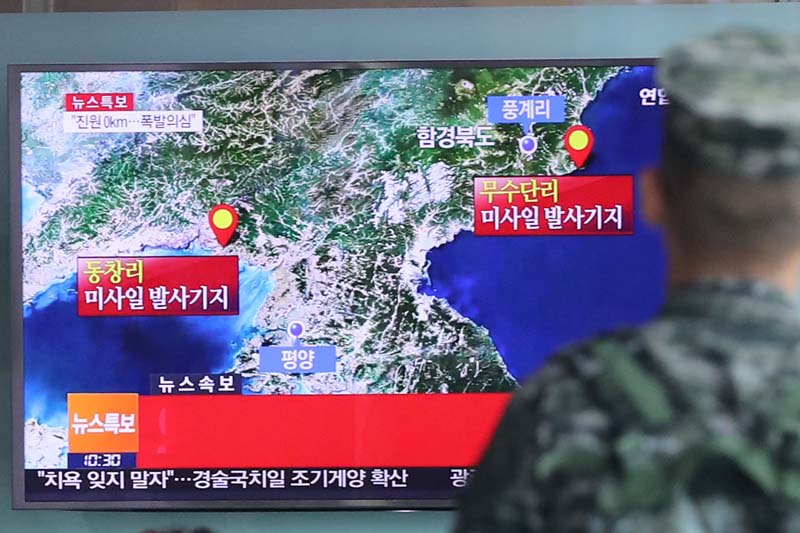North Korea conducts fifth and largest nuclear test
UPDATE
SEOUL: North Korea conducted its fifth nuclear test on Friday, South Korea and Japan said after meteorological agencies reported a surface-level seismic tremor near the North's known test site that indicated it was its most powerful yet.
The US Geological Survey and European agencies measured the quake, which was recorded at 0030 GMT, with a magnitude of 5.3. Agencies in China, reclusive North Korea's main diplomatic ally, also recorded the tremor.
South Korean President Park Geun-hye, in Laos after a summit of Asian leaders ended there on Thursday, said it was a nuclear test, her office said.
Park said North Korean leader Kim Jong Un was showing "maniacal recklessness" in completely ignoring the world's call to abandon his pursuit of nuclear weapons.
Isolated and aggressive North Korea conducted its fourth nuclear explosion in January and followed it up with a series of missile tests despite severe United Nations sanctions. On Monday, it fired three medium-range missiles during a G20 summit in neighbouring China that was attended by US President Barack Obama and other world leaders.
Obama held unscheduled meetings with Park and Japanese Prime Minister Shinzo Abe after the missile tests and said Washington needed to maintain a sense of urgency within the international community on sanctions against Pyongyang.
Obama spoke with Park by telephone for about 15 minutes as he flew back from Laos, the presidential office in Seoul said.
Japan also described the seismic event as a nuclear test. Defence Minister Tomomi Inada said that, while it was probably not a hydrogen bomb test, the Pyongyang regime's advances in mobile ballistic missile technology posed a grave threat to Japan.
If a nuclear test is confirmed, it could have been timed by North Korea to coincide with the anniversary of its 1948 foundation as a republic. Its continued testing despite sanctions presents a severe challenge to Obama in the final months of his presidency and could become a factor in the US presidential election in November.
"Sanctions have already been imposed on almost everything possible, so the policy is at an impasse," said Tadashi Kimiya, a University of Tokyo professor specialising in Korean issues.
"In reality, the means by which the United States, South Korea and Japan can put pressure on North Korea have reached their limits," he said.
North Korea nuclear blast measured at least 20 to 30 kilotonnes
SEOUL: A 5.3 magnitude seismic event in North Korea on Friday, thought to have been the North's fifth nuclear test, would indicate a device with a 20- to 30-kilotonne yield, an analyst said, the largest yield estimate yet of a North Korean nuclear device.
"That's the largest DPRK test to date, 20-30kt, at least. Not a happy day," Jeffrey Lewis of the California-based Middlebury Institute of International Studies told Reuters, using the North's official title of the Democratic People's Republic of Korea.
"Yield estimates are always kind of approximate. The point is that it is the biggest one to date unless they revise the yield downward," he said.
Initial analysis of North Korea's January 2016 test estimated a yield of just 6 kilotonnes.






